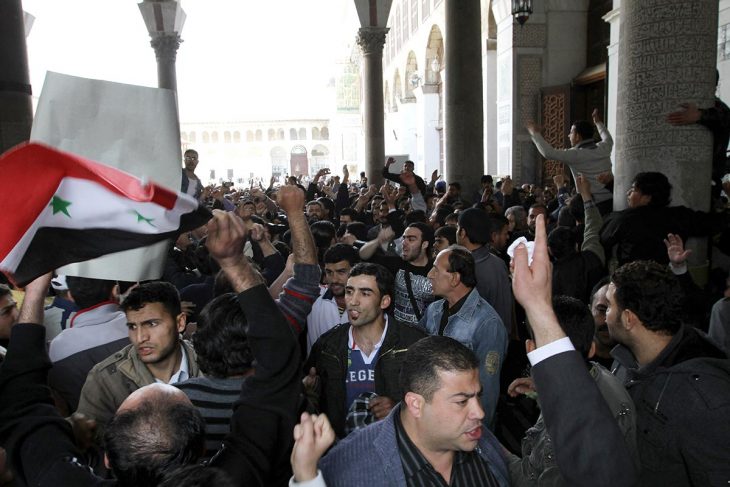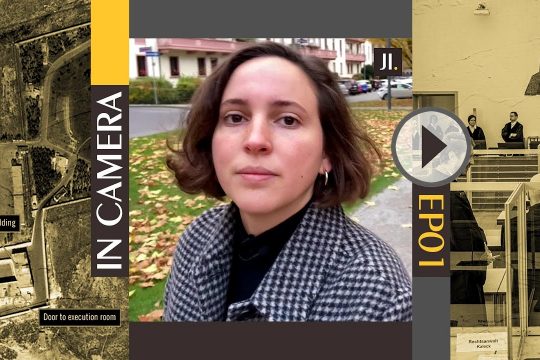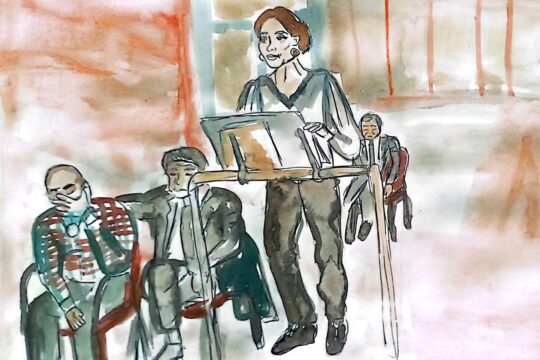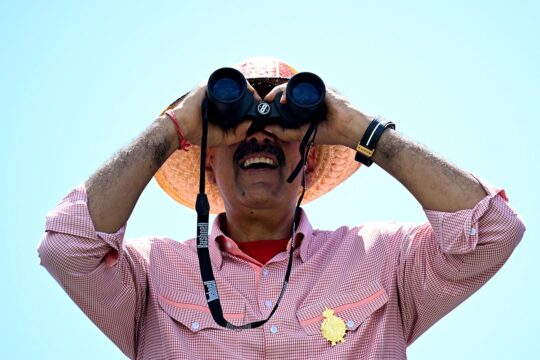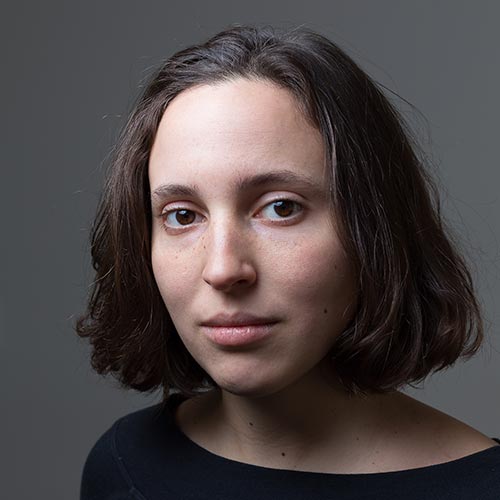The last time she saw Anwar Raslan, the witness had just spent some of the worst days of her life in the prison of secret service branch 251 in Damascus. After more than a week in a 1.5 square meter solitary cell with no windows, the then 19-year-old feared she would lose her mind. When she asked to see the colonel, she had just one request: to be transferred back to the communal cell with the other female prisoners. In his office on the first floor of the branch, otherwise known as Al-Khatib, she cried and pleaded with Colonel Raslan to grant her that one wish. “I knew that he would lose nothing if he allowed it,” she testified in court nine years later, breaking out in tears. But even though Raslan spoke to her like a friendly uncle and said he would help her, she was returned to the dreaded isolation cell alone. “He was cold as ice,” she said of the defendant, who was sitting to her right in the courtroom, taking notes.
As the Al-Khatib trial in the German city of Koblenz continues into its second year, two witnesses have talked about their personal encounters with defendant Anwar Raslan. The former head of investigations at branch 251 is accused of 4,000 cases of torture, 52 killings and several cases of sexual violence that allegedly happened at the secret service prison while he was in charge. After his co-defendant, a lower-ranking officer, was sentenced to four and a half years in prison at the end of February for aiding and abetting crimes against humanity, the trial against Raslan has continued separately, with a verdict expected this autumn.
A highly intelligent officer with a photographic memory
During the first year of the trial that started in April 2020, the structural framework of what has been happening in Syria since the beginning of the popular uprising ten years ago has been established. After examining the Caesar photos of prisoners tortured to death and internal government documents, after hearing insiders, experts and survivors on general prison conditions, on the structure of the secret services, and on the violence used against peaceful protesters, the court has concluded that the Syrian regime has committed crimes against humanity against the civilian population. Now it is time for the judges to narrow down the exact role that Raslan may have played in these crimes.
The young woman in the solitary cell was not the first witness who identified Raslan in this trial. There were several witnesses last year who had encountered him, among them a young conscript who said that the colonel had always been friendly to lower-ranking officers; a German journalist who met Raslan in Jordan and described him as highly intelligent with a photographic memory; and an ex-detainee who said that Raslan had offered her coffee during the interrogation and treated her in a friendly way. In comparison to them, the latest witnesses’ testimony cast a much poorer light on the defendant. In her testimony lasting for two days in mid-April, the young woman explained that she met Raslan for the first time more than a year before her own incarceration.
In March 2011, her sister had organized and attended one of the very first protests of the Syrian uprising, where she was arrested and taken to branch 251. A few days later, the witness’s parents managed to organize a meeting with Raslan and their daughter to ask for her release. The witness went with them to see her sister. “Her headscarf was full of blood. Her face was swollen and blue from being beaten,” she remembers, when Raslan brought her sister into the office. “My father was very upset and asked Raslan if we could take her with us. But he responded that they would keep her for a few days to educate her.”
“I was thinking of ways to end my own life”
Despite this experience, the witness – who is one of around 20 joint plaintiffs in the case – decided to ask Raslan for help when she was arrested herself during a protest in Damascus and detained in branch 251, just like her sister a year before. In the courtroom in Koblenz, she described how she was tortured in Al-Khatib branch with electric shocks, how she was hung from her wrists from the ceiling and burned with hot water. According to the indictment, all these acts were committed under Raslan’s responsibility. “I was thinking of ways to end my own life,” she said of her time in the solitary cell during which she said she was sexually abused by one of the prison guards. She was the first witness who was accompanied by a psychosocial trial assistant who sat next to her in court with a hand on her shoulder to support her during the hardest parts of her testimony.
Raslan reacted to the accusations in a statement read by his lawyers the next day. He gave a different account of the events, claiming he had in fact protected the witness’s sister and other detained women. “Two officers were insulting and beating them,” he said. “I stepped between them and told the officers, who were not under my command, to stop.” Even though he said he did not remember the witness asking him for help during her own detention a year later, he argued: “She would hardly have turned to me if her sister had told her anything negative about me after her release.”
“Not the kind of person who would punch someone in the face”
Another witness who claimed to have seen Raslan on several occasions testified in early April. The Syrian journalist said that the defendant had been among the security forces present at small protests in Damascus in early 2011. At one of these protests, the witness claimed that he was punched in the face by Raslan when he tried to prevent his friends from being arrested. This prompted him to take a photo of Raslan when he saw him again at the funeral procession for a famous Syrian film director. “I was filming the funeral procession when I recognized the man who had punched me. So, I took his photo,” the witness explained to the judges in Koblenz, adding that he had hoped the picture might help him hold that man accountable one day.
The photo is not part of the Raslan prosecution file. It was allegedly taken from the witness together with his laptop when he was arrested from his home and detained in Al-Khatib branch a few weeks after taking it. He claims that at the branch he was beaten again by Raslan, who interrogated him about the photo. “I was very scared that they would take revenge on me,” said the witness, who was later released after almost two weeks of interrogation and torture. “I had photographed a member of the security services, which was of course a problem in Syria at the time.”
The defence reacted to his statement by arguing that Raslan had an office job and was not present during protests, so the witness could not have seen him there. They added that their client was not the kind of person who would punch someone in the face.
More testimonies are expected about alleged acts by Raslan, including evidence about violence that he allegedly committed personally. “But in the majority of the 4,000 torture cases he is accused of, he did not personally raise his hand and beat someone,” victims’ lawyer Patrick Kroker explains regarding crimes for which Raslan could also be held accountable as a superior. Then the court will examine Raslan’s personality. “When it comes to sentencing, it will be important whether he was especially cruel or whether he did his job unwillingly,” says Kroker.


